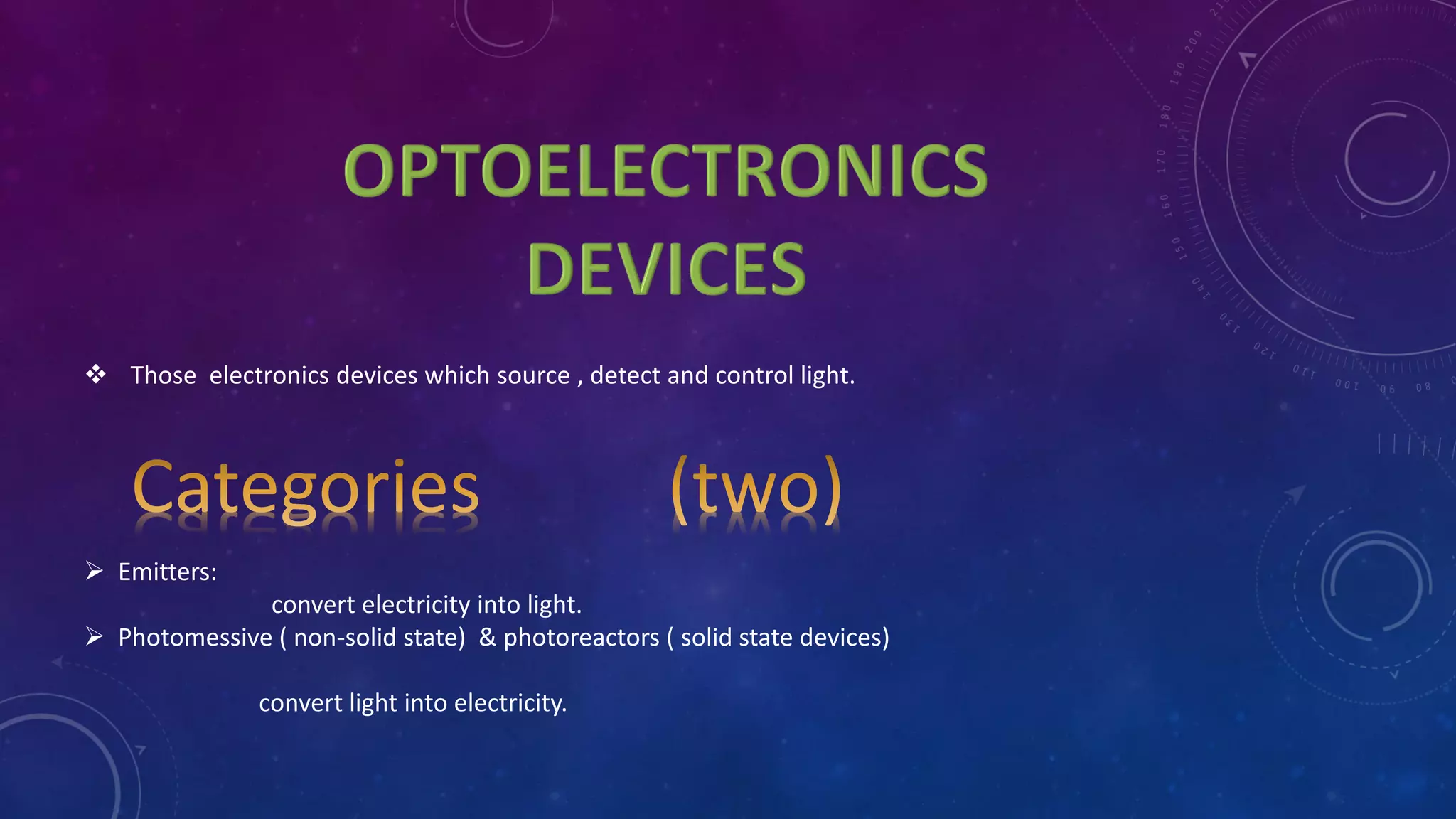Optoelectronics involves devices that interact with light, including emitters that convert electricity to light and photodetectors that convert light to electricity. Optoelectronic devices include light-emitting diodes (LEDs) and photomultiplier tubes. LEDs emit light when forward-biased in a PN junction as electrons recombine with holes, releasing photons. Photomultiplier tubes are extremely sensitive light detectors that can detect single photons by multiplying an initial photocurrent through a series of dynodes. Optoelectronic devices have applications in displays, fiber optic communication, imaging, and other technologies.















